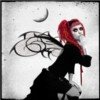Prepare for whimsy.
The new D&D 5E book is The Wild Beyond the Witchlight and it is likely to give the entire OSR a stroke despite a few Greyhawk-era callbacks and the triumphant return of Warduke. Rather than deathtrap dungeons and umpteenth generation Howard/Leiber/Vance homages it’s a much more whimsical affair bedecked with assorted Bradbury/Gaiman/Carroll touches that make for a brighter, lighter high fantasy setting. It’s more Wizard of Oz than Drizzt and I applaud this book for taking a different tack than say, Tomb of Annihilation. It is a campaign book set in the Feywild, but unlike most of 5E’s previous adventures it is almost entirely focused on exploration and roleplaying- this is an adventure where players could theoretically get through the whole thing with minimal combat, which could appeal to players and DMs who are looking for high fantasy with less violent outcomes than is common.
As expected from a 5E book, it’s all well written but also over-written, with a dazzling array of elements and moving parts for the DM to manage. Like most 5E adventure books not called Candlekeep Mysteries or that are compliations of classic module conversions, this is one that is going to require a good bit of prep work to get running and it may not be well suited to novice DMs, although tools such as a story tracker, a set of NPC cards, and a structured trajectory through the core story will help. The hooks are a mixed bag, I really like the one where each PC has a “lost thing” that was taken from them by the carnival as a child – it’s the right mix of whimsy, wonder, and wicked. The other is more of an “old wizard tells you to go do stuff” thing that works but it’s uninspired and frankly sort of lazy. The madcap Witchlight Carnival is the centerpiece of the narrative and it leads to a deeper storyline involving a kidnapped Archfey and their Domain of Delight, Prismeer. Without spoiling it, the big bad is a callback all the way back to 1982’s Lost Caverns of Tsojcanth.
Despite its intention as kind of a jump-off point for the realm-hopping that goes on for most of the book, a lot of text is spent up front on the Witchlight Carnival, a wild assortment of NPCs, events, and of course attractions that you must get a ticket punched to enjoy. The players’ behavior can directly impact the tone of the carnival, which is a cool touch, as the whole mood of the environment reacts directly to how the party navigates Big Top events, assorted rides, and minigames. If the PCs engage the carnival’s denizens, follow the rules, and partake in the frivolity it stays light and fun. But bad manners, coarseness, and indifference might cause the whole show to take a darker, more ominous tone. It’s all very cute and I can see some groups whiling away many RP-focused sessions enjoying the interactions and the open-ended scenarios that might evolve from messing around in the carnival. For parties that like carousing and assorted mischief in town, this could be a compelling alternative to the usual town-based troublemaking on its own without the larger storyline.
I like this book, but it’s also not the kind of prep-heavy game I’m prone to invest in as a DM - I’ve been poisoned by Mork Borg, after all. Reading through the story, which involves Hags (which I love to run) and the three distinct realms of Hither, Tither, and Yon before winding up in Prismeer and the Archfey’s castle, the Palace of Heart’s Desire, where they’ll even run into a Jabberwock as if the homage weren’t already apparent. There’s a very clear “level” based structure once the PCs enter the Feywild via the carnival, but throughout the realms there is a sense of vagary and indirect goals that some might find lacking or potentially unmotivating without the aforementioned heavy DM work to get everyone on board. Be prepared to function as a ringmaster.
It’s all definitely a unique feel for a WOTC D&D book- this is writing that is leaning into a different type of fantasy than what is typical for the brand and there are elements of it that are actually quite maverick for a D&D product. It’s by turns goofy and grim but never really all that dark- witness the brightly colored maps that practically scream “WHIMSY” at you and things like singing mushrooms or capricious magic swords. It highlights a “pillar” of D&D that too often gets buried under combat and exploration by focusing on actual role-playing. This is an adventure for weirder, quirkier characters rather than your optimized, statistically ironclad god-builds and I appreciate that aspect of it as someone who hates “optimal” characters.
Wild Beyond the Witchlight is a neat set of ideas and I value the inspiration the book offers. I enjoyed reading it, but I’m coming away from it thinking that this is one of those books that I’d never want to run and I’d be somewhat disinterested in playing through its campaign. Some of the material included might be of use outside of the adventure and there are some fun new monsters such as a Displacer Beast kitten which I absolutely adore because they are my favorite D&D monster. There are a couple of new player ancestries (including a fabulous rabbitfolk option), backgrounds focused on the Feywild setting, and a decent table of fairy trinkets that could provide some mystery and mirth in any game. But this is, for me, a book to have as part of the collection rather than as a practical tome.
What it all comes down to is subjective. No surprise there, of course, but I think there are some tables that are going to absolutely adore this book and god bless ‘em, I hope they have many happy hours exploring the Feywild and riding the Bubble-Pop Teapot and the ride that may have some shouting “Look, it’s the Dungeons & Dragons ride!”. I’d much rather be investing the time and effort to run Goodman Games’ brilliant 5E conversion of Temple of Elemental Evil, or running something like Emmy Allen’s wonderful books The Stygian Library or Gardens of Ynn, maybe even Troika! for something more wicked and whimsical. But for those deep into 5e, this is an excellent option for a more fairy tale-ish adventure.
 Games
Games How to resolve AdBlock issue?
How to resolve AdBlock issue? 







